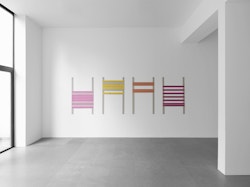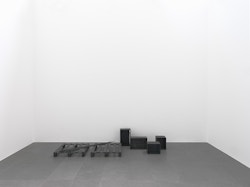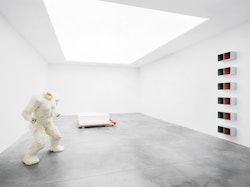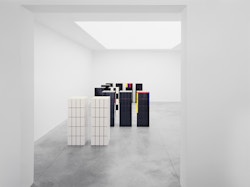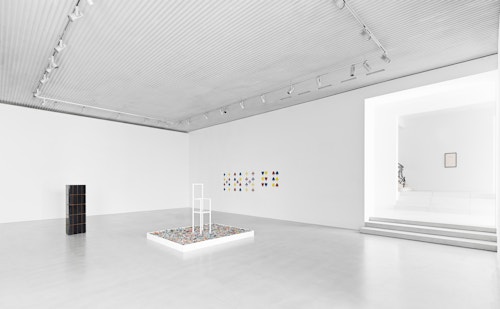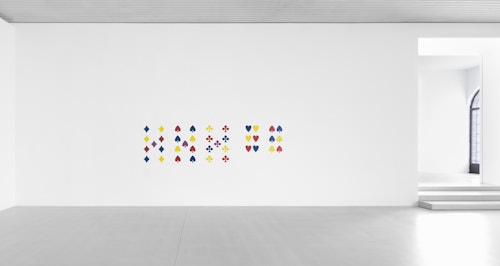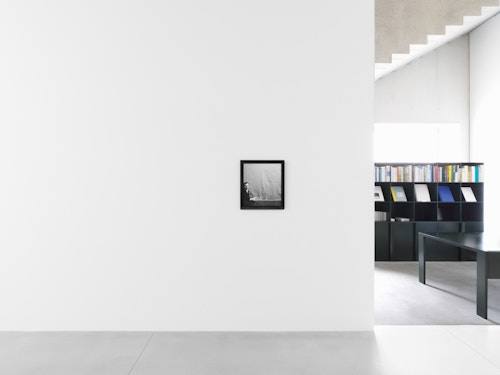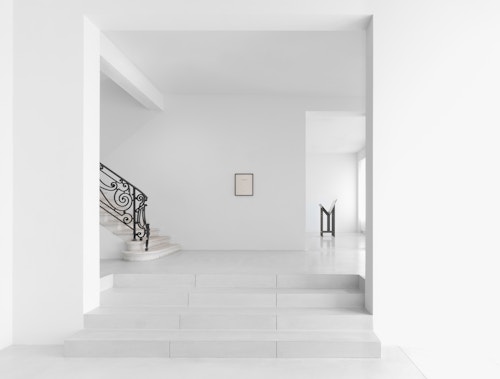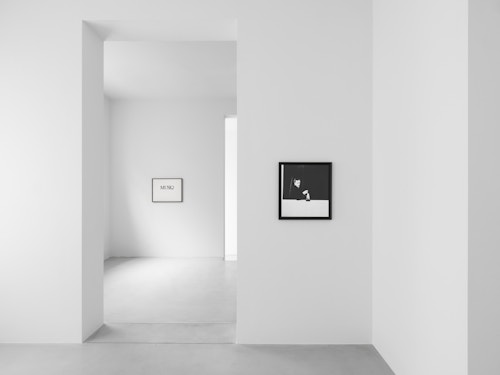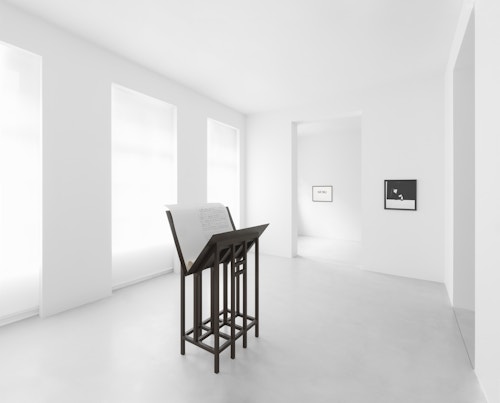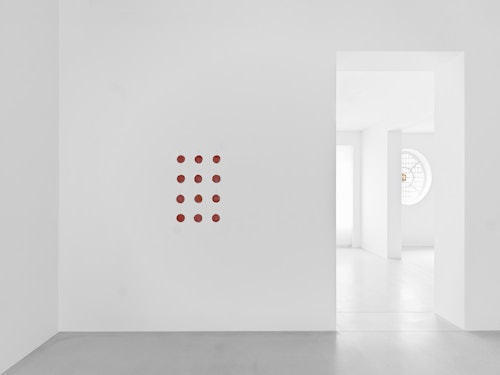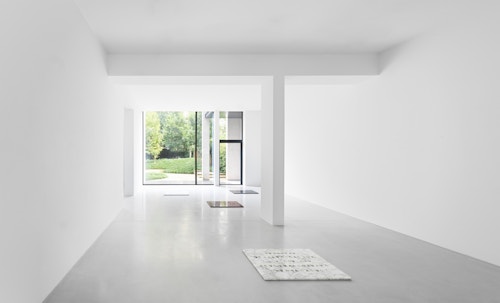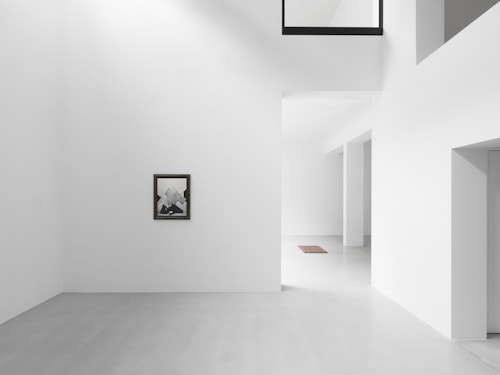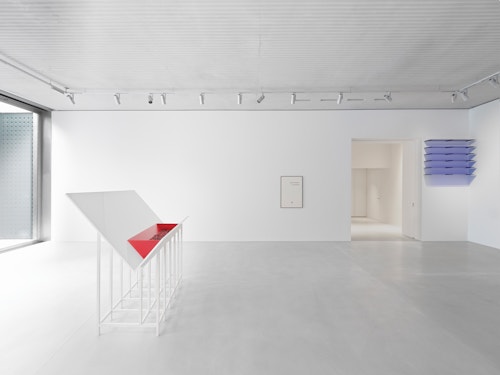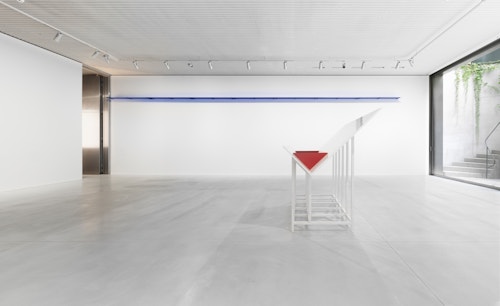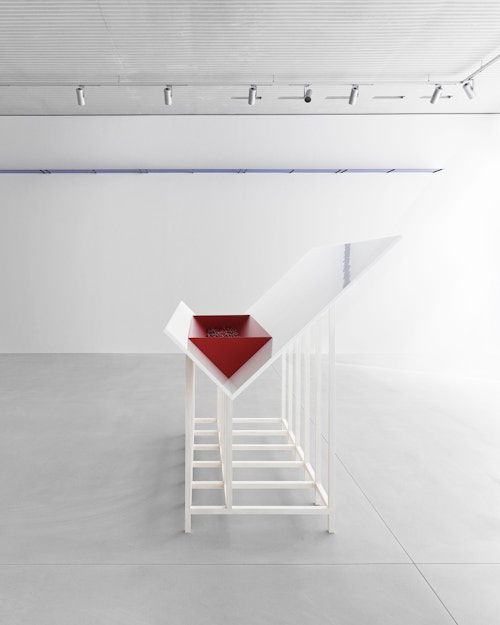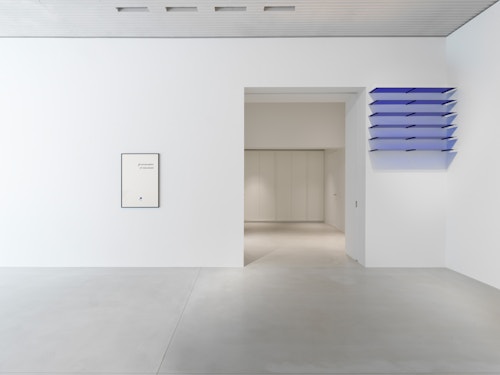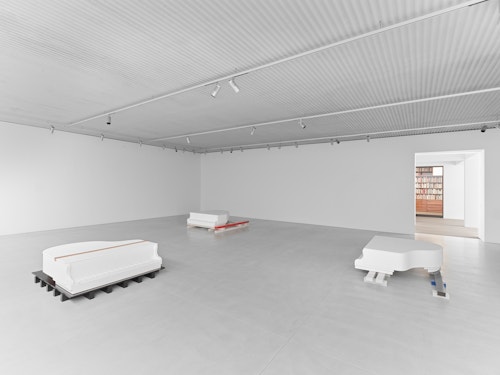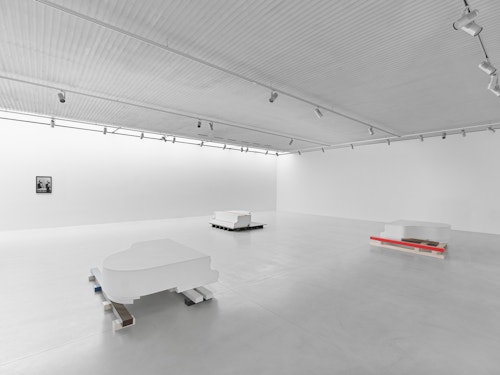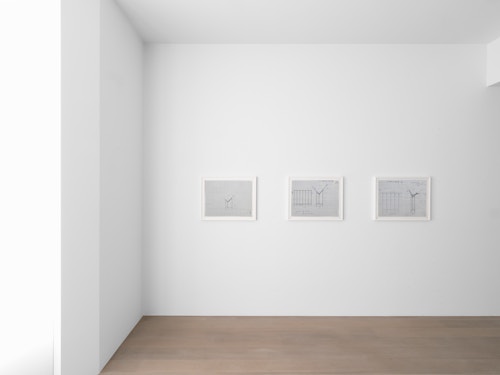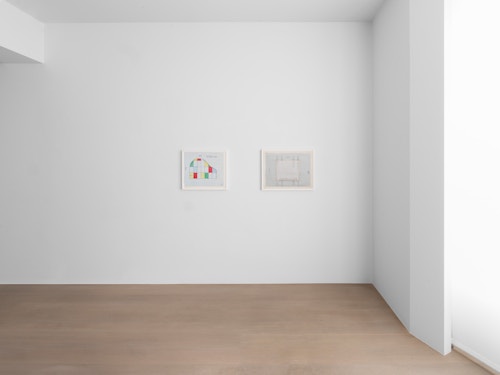
Jan Vercruysse Vie d’Artiste
In 2009, a survey exhibition of Jan Vercruysse at Museum M Leuven brought renewed attention on an artist who had not only dominated the Belgian art scene but had also been at the centre of the reinvention of sculpture in the 1980s and 1990s. Despite being sidelined by the return of figurative painting and hindered by his own exacting temperament, Vercruysse's work—ranging from poetry and photography to intricate sculptural forms—retains the same enigmatic allure it did three decades ago. From his early Atopies and Tombeaux to his later works like the coded marble poems (Places), legless silent pianos (M/M), and garden projects (Labyrinth and Pleasure Gardens), Vercruysse’s art continues to be as strange, opaque, and captivating as ever.
Two years later, when Barbara Gladstone invited me to curate an exhibition for her gallery in New York, I chose to invite Vercruysse, hoping to bring his work back into an international conversation, but also to give back to an artist who had been instrumental in my early days in the art world.
Vie d’Artiste is that project’s second chapter, unfolding after Vercruysse’s passing and a decade since his last exhibition at Xavier Hufkens. This chapter focuses on his work as a portrait of the artist, something that was difficult to realise while Vercruysse was alive and was still making work.
I met Jan Vercruysse when I was 19 years old. The first time I saw him, he was drinking a marc de Bourgogne at L’Archiduc, a bar where, along with other members of the artistic scene of the time, we would spend many drunken nights in the years to come. He was introduced to me as Belgium's most important artist. His poise, style, wry sense of humour, erudition, and sophistication mesmerised me. He resembled Jan Van Eyck’s Man in a Red Turban, as if the faces of men from Ghent or Bruges hadn’t changed in over 500 years. We struck up a conversation and over time, he became a sort of mentor, introducing me to a world of references ranging from Mallarmé, Nietzsche, and Bruce Nauman to Pessoa and Giorgio Agamben. Lili Dujourie, Franz West, Thomas Schütte, and Juan Muñoz were his friends and companions in the reinvention of sculpture in Europe in the ’80s and ’90s. Together, they composed the first aesthetic landscape where I discovered how philosophy, aesthetics, literature, poetry, politics, and life converged in ever-evolving forms. There were many actors on that stage, from curators like Carolyn Christov-Bakargiev, Suzanne Pagé, and Harald Szeemann, to gallerists like Joost Declercq, Lisson, and Durand-Dessert, and writers like Alain Cueff and Pier Luigi Tazzi. To Jan, art was a way of life that encompassed everything—from what you ate, drank, and wore, to how you spent your time.
Vie d’Artiste, Vie de Chien, Vie de Prince is an early silkscreen (1976) that could be read as a manifesto for Jan's life, one of total commitment to his work, regardless of the costs or rewards. He had a passion for languages and an ambiguous relationship with his Belgian and Flemish identity. He rarely used Dutch in his work, but he had a deep appreciation for the evocative power of foreign languages such as French, Italian, and English, with which he enjoyed playing. I chose two other editions: Je veux bien finir mes jours comme Nietzsche [I want to live out my days like Nietzsche], or Je est un autre et vous aussi [I is another, and so are you) as another form of self-portraits. Together with his photographic self-portraits, they express the artist’s inability to engage with the everyday, choosing instead to live within an artificial realm of art and shifting identities. In his photographic self-portraits, he is often seen hiding behind masks or playing chess in front of theatrical backgrounds, existing in one mise-en-scène at a time.¹
There was a line by Fernando Pessoa that Jan liked to quote: I would have liked to be a simple soul, a man of limited or lofty ambitions, married to the daughter of my washerwoman (‘The Book of Disquiet’). Vercruysse’s work is deeply marked by melancholia—a perverse longing for what is past and can never be again, or for what will never be at all. His art gives sculptural form to a feeling more often expressed in music or poetry. From his first monumental and solemn Tombeaux (a tomb but also a poem to celebrate the dead) or Atopies (simultaneously a non-site and the absence of utopia), Vercruysse moves towards more playful works that integrate tropes such as playing cards, labyrinth, glass marbles or music. He introduces colour, coded languages and deadpan humour. I believe that this prolific period has not yet received the attention it deserves. It represents the other side of the coin: a celebration of earthly pleasures—the things that make life bearable when happiness is unattainable.
There are many stones left unturned if we want to fully understand Vercruysse’s work and his place in history. His mannerism, dandyism, and preciousness might seem like they belong to a bygone era—one still connected to the 19th century, when poetry and literature were paramount. In other words, Vercruysse provides us access to a space of sophistication that might otherwise be lost.
Curation and text by Anne Pontégnie, Brussels, 2024
¹A brilliant essay on the topic: A. Pereira Rodriguez, “The Last Flemish Primitive : Jan Vercruysse’s self-fashioning of artisthood and national identity,” ARTS, vol. 11, no. 1, 2022.

An exhibition focused on Jan Vercruysse's Labyrinth & Pleasure Gardens and the Tombeaux series will be on view at the van Buuren Museum, Brussels, from 5 September to 17 November 2024.
Jan Vercruysse (b. 1948, Waregem, Belgium; d. 2018, Bruges, Belgium). Vie d’Artiste marks the artist’s fifth solo exhibition with Xavier Hufkens, continuing a collaboration that began in 1991. Other solo exhibitions included Kunsthalle, Bern (1989); Van Abbemuseum in Eindhoven (1990, 1997); the Belgian pavilion at the Venice Biennale (1993); Mies van der Rohe's Museum Haus Lange and Haus Esters in Krefeld (1995); Palais des Beaux-Arts, Brussels (1999); Museum Dhondt-Dhaenens in Deurle (2001) and Museum M in Leuven (2009). His work is part of many important American and European museum collections.
Anne Pontégnie is a Belgian curator and art critic. She runs APOffice, contemporary art resources. She is curator of Cranford Collection in London and was co-director of Le Consortium, Dijon from 2010 to 2018. Prior to that, Pontégnie was chief curator at WIELS Contemporary Art Center in Brussels. Pontégnie has curated numerous exhibitions and monographs with artists such as Mike Kelley, Daan Van Golden, Edith Dekyndt and Christopher Wool. She writes regularly for magazines and catalogues.
With special thanks to Anton Pereira Rodriguez and Hilde Borgermans.
Anton Pereira Rodriguez is a PhD student at the Department of Art, Music and Theatre Studies (Ghent University) and member of the research group KB45 (Kunst in België sinds 1945 / Art in Belgium since 1945). His dissertation focuses on Jan Vercruysse's capacity as an exhibition artist, examining the connection between his (solo) exhibitions and his conceptualisation of artisthood.
Hilde Borgermans is independent artist and curator. During and after her training in painting, Hilde was an assistant and apprentice of Jan Vercruysse. She is the President of the Jan Vercruysse Foundation.
